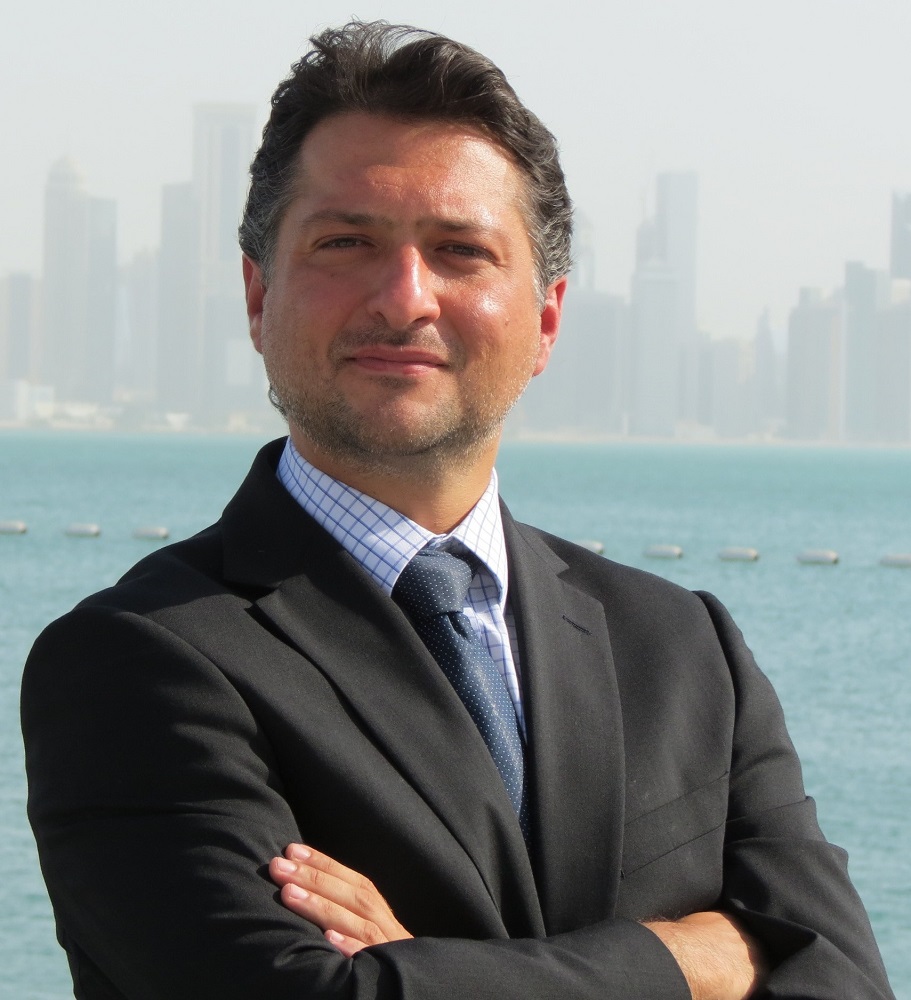The Big 5 Kuwait speaker and a point of reference in Kuwait when it comes to low-energy, environmentally friendly urban solutions, Dr Ioannis Spanos, Senior Sustainability Manager at KEO International Consultants, speaks to Climate Control Middle East about the benefits of Green practices, as the construction event launches Sustainability Day on September 27, 2016.

Dr Ioannis Spanos
Today, incorporating Green Building practices within Kuwait’s construction industry is imperative for meeting the country’s sustainability targets. Reflecting this, the State of Kuwait submitted an Intended Nationally Determined Contribution (INDC) to the UN Framework Convention on Climate Change (UNFCCC) in Paris last year, while its 2035 Vision Plan focuses heavily on economic diversification through infrastructure investment.
“Sustainability is not just about providing something that is ‘Green’; it is about providing a product of a better quality and a higher value,” says Dr Ioannis Spanos. “Good sustainability design improves residents’ quality of life and makes sustainable buildings more desirable. And on top of that, Green Buildings are good for the environment.”
The most cost-effective solution with an immediate benefit is improving the facilities’ management.
It is evident that Green Buildings have manifold advantages: In the global commercial real estate market, sustainable buildings hold the highest occupancy rate, while scoring higher rents to the benefit of their developers. For the development of truly sustainable cities, however, proper urban planning is paramount. In this context, Dr Spanos warns, “A building cannot operate in a sustainable way if surrounding facilities do not support its functions.” He delineates: The design of street blocks can reduce energy consumption and cooling; the design of good roads can shrink distance travelled and commuting delays; correctly designed pedestrian and bicycle paths can limit the number of cars, making individuals more active and parks correctly placed in the urban-scape can provide elements of relaxation during stressful days. “All of these urban planning elements improve and contribute to a building’s sustainability rate,” says Dr Spanos. “Most importantly, they provide the foundation for sustainable buildings and a sustainable living.”
Dr Spanos believes that in future, individuals residing in sustainable cities will be happier, with a higher life satisfaction rating. “Not only will sustainability provide financial, social and environmental benefits,” he propounds, “but sustainable smart cities will also be able to do more with less.”
A building cannot operate in a sustainable way if surrounding facilities do not support its functions.
While more and more new buildings are designed incorporating energy-efficient solutions, industry experts are researching and developing innovative ways to increase sustainability in older, Existing Buildings. With reference to Kuwait, Dr Spanos says, “If the buildings are low-rise, then external insulation may be an option. This will have a triple benefit: Reduce heat losses, reduce air leakage and stop any water penetration.”
Highlighting that high-rise buildings present bigger challenges, being extremely difficult to insulate existing walls, he, however, adds, “Insulation is just a portion of potential energy-efficient measures.” He explains: “Nowadays, LED lighting at the cost of the fluorescence tubes and fans of air-handling units can consume 30% less of what they used to consume 15 years ago; chillers’ efficiency also increased dramatically. If any equipment is planned to be changed, then it makes a lot of sense to go for the most efficient option. Finally, the most cost-effective solution with an immediate benefit is improving the facilities’ management. Studies demonstrate that buildings are currently wasting 5-10% of their energy due to a lack of appropriate management.”
[div class=”text-box text-box-left” style=”background-color: #4BFB20; color: #000000; “]
At The Big 5 Kuwait 2016
Dr Spanos will deliver a presentation on ‘Developing a project management approach to the design of Net Zero Energy Buildings’ at The Big 5 Kuwait 2016 on September 27, as part of the show’s first dedicated Sustainability Day.
Taking place from September 25 to 27, 2016 at the Kuwait International Fair, purportedly the largest building and construction event in Kuwait will introduce products, including building materials and Green Technologies.
According to exhibition organisers dmg events, alongside the exhibition, visitors will have the opportunity to attend over 20 free CPD-certified workshops, including the Sustainability Day focusing on smart, sustainable Green Buildings and cities.
[end-div]
Integration of photovoltaic panels is another option when it comes to increasing a building’s sustainability rate. In Kuwait, Dr Spanos recommends developing small-scale projects on the roofs of public sector buildings first. Here, evidently, installation costs can be kept low, energy can be used within the same facility and the overall financial benefit can return directly to the public. However, in order to support the diffusion of photovoltaic integration among private individuals as well, Dr Spanos calls for the development of large-scale financially attractive plans.
“Today, one of the biggest business opportunities in Kuwait’s construction industry is the development of sustainable projects, which will last for a long time, providing a space where people will want to work and live,” Dr Spanos says. In his opinion, stakeholders and developers are increasingly aware of the benefits of sustainability; however, he thinks there’s still a long way to go to fully implement sustainable best practices in the local design and construction industry.
“Sustainable building techniques and materials have been tested globally, and their benefits proved,” he points out. In order for sustainability to be fully integrated in the GCC region’s construction landscape, he adds, “Contracts and design delivery should move forward to the construction process silos, and produce a more coherent approach to the design and development of the projects.” Alluding to the experience in the Western world and China, he underlines, “If Zero Energy Buildings are designed correctly, additional costs may be very small against the overall value and payback of the final product.”
Copyright © 2006-2025 - CPI Industry. All rights reserved.